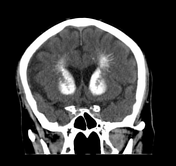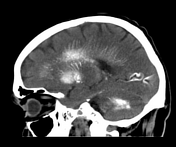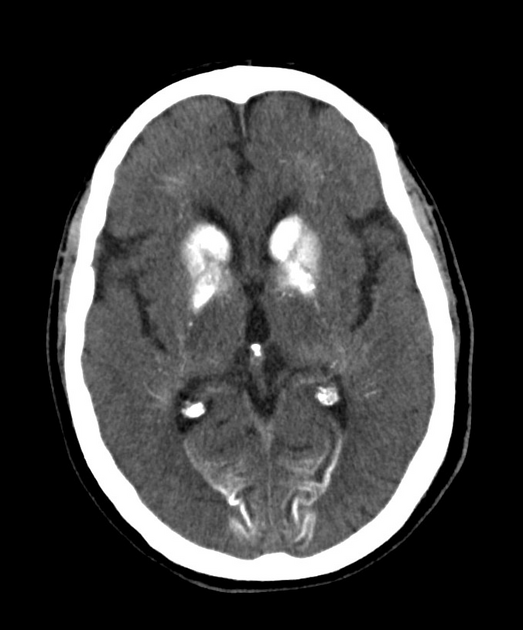Presentation
Accidental head trauma. No other known pathologies.
Patient Data
Age: 65 years
Gender: Male
From the case:
Fahr syndrome






Download
Info

Symmetric calcified deposits in basal ganglia, cerebellum and subcortical white matter. No other anomalies.
Case Discussion
Incidental findings of basal nuclei calcification may suggest Fahr syndrome.
In all cases of suspected Fahr syndrome, additional tests should be performed to investigate for a potential secondary cause. In this case, asymptomatic hypoparathyroidism was found with no other associated pathologies, confirming Fahr syndrome.




 Unable to process the form. Check for errors and try again.
Unable to process the form. Check for errors and try again.